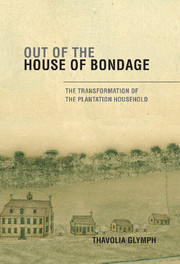Book contents
- Frontmatter
- Contents
- Acknowledgments
- Abbreviations
- Introduction
- 1 The Gender of Violence
- 2 “Beyond the Limits of Decency”
- 3 Making “Better Girls”
- 4 “Nothing but Deception in Them”
- 5 Out of the House of Bondage
- 6 “A Makeshift Kind of Life”
- 7 “Wild Notions of Right and Wrong”
- Epilogue
- Bibliography
- Index
- References
4 - “Nothing but Deception in Them”
The War Within
Published online by Cambridge University Press: 05 June 2012
- Frontmatter
- Contents
- Acknowledgments
- Abbreviations
- Introduction
- 1 The Gender of Violence
- 2 “Beyond the Limits of Decency”
- 3 Making “Better Girls”
- 4 “Nothing but Deception in Them”
- 5 Out of the House of Bondage
- 6 “A Makeshift Kind of Life”
- 7 “Wild Notions of Right and Wrong”
- Epilogue
- Bibliography
- Index
- References
Summary
To the credit of the colored people be it said that during the Civil War, when on plantation after plantation the mansions were occupied only by wives and daughters, not a disloyal act or word ever occurred.
Mary Norcott Bryan, ex-mistressLiddy has run off to the Yankees.
Sarah Morgan, mistress…it has been my constant desire to make my negroes happy & I am every now and then awakened to the fact that they hate me…it is nothing on earth but that I am white & own slaves.
Keziah Goodwyn Hopkins Brevard, mistressThe Negro women marched off in their mistresses' dresses.
Kate Stone, mistressIn 1861, Betsey Witherspoon of Society Hill, South Carolina, was murdered “by her own people. Her negroes.” The news of Witherspoon's death left her “neighborhood in a ferment,” in a state of shock that this woman, “a saint on this earth,” “so good – so kind,” a mistress who had “indulged and spoiled” her household slaves “until they were like spoiled children,” had come to such an end. This they said even as they simultaneously noted that Witherspoon's “pampered” slaves were “indolent and “insubordinate.” Her cousin, Mary Boykin Chesnut, began to consider whether she herself should be afraid, though she had “never thought of being afraid of negroes” before. Chesnut turned first to proslavery ideology. After all, “I had never injured any of them,” she wrote in her journal, so “Why should they want to hurt me?” But she quickly reconsidered that position.
- Type
- Chapter
- Information
- Out of the House of BondageThe Transformation of the Plantation Household, pp. 97 - 136Publisher: Cambridge University PressPrint publication year: 2003



